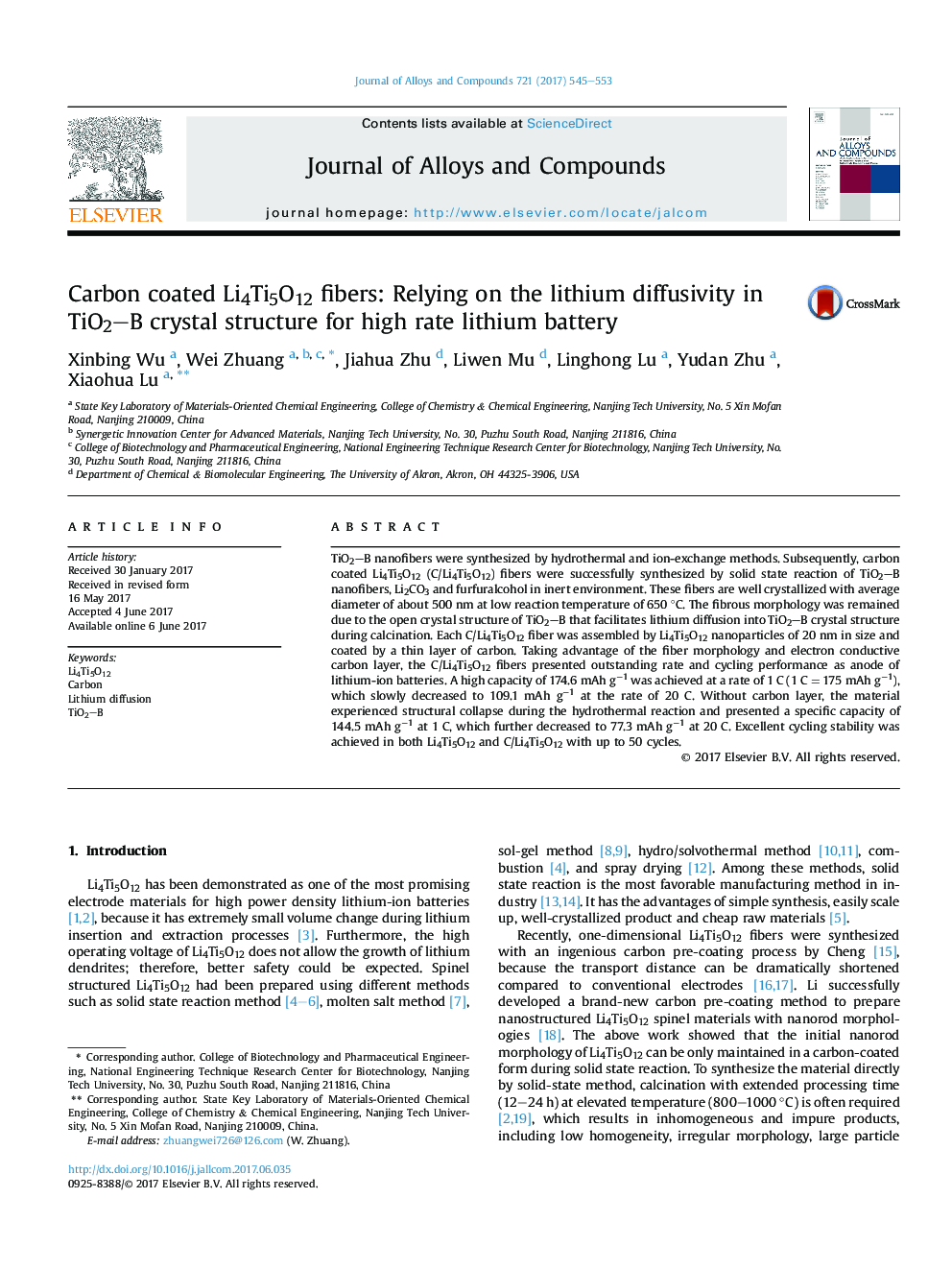| Article ID | Journal | Published Year | Pages | File Type |
|---|---|---|---|---|
| 5458632 | Journal of Alloys and Compounds | 2017 | 9 Pages |
Abstract
TiO2-B nanofibers were synthesized by hydrothermal and ion-exchange methods. Subsequently, carbon coated Li4Ti5O12 (C/Li4Ti5O12) fibers were successfully synthesized by solid state reaction of TiO2-B nanofibers, Li2CO3 and furfuralcohol in inert environment. These fibers are well crystallized with average diameter of about 500 nm at low reaction temperature of 650 °C. The fibrous morphology was remained due to the open crystal structure of TiO2-B that facilitates lithium diffusion into TiO2-B crystal structure during calcination. Each C/Li4Ti5O12 fiber was assembled by Li4Ti5O12 nanoparticles of 20 nm in size and coated by a thin layer of carbon. Taking advantage of the fiber morphology and electron conductive carbon layer, the C/Li4Ti5O12 fibers presented outstanding rate and cycling performance as anode of lithium-ion batteries. A high capacity of 174.6 mAh gâ1 was achieved at a rate of 1 C (1 C = 175 mAh gâ1), which slowly decreased to 109.1 mAh gâ1 at the rate of 20 C. Without carbon layer, the material experienced structural collapse during the hydrothermal reaction and presented a specific capacity of 144.5 mAh gâ1 at 1 C, which further decreased to 77.3 mAh gâ1 at 20 C. Excellent cycling stability was achieved in both Li4Ti5O12 and C/Li4Ti5O12 with up to 50 cycles.
Keywords
Related Topics
Physical Sciences and Engineering
Materials Science
Metals and Alloys
Authors
Xinbing Wu, Wei Zhuang, Jiahua Zhu, Liwen Mu, Linghong Lu, Yudan Zhu, Xiaohua Lu,
